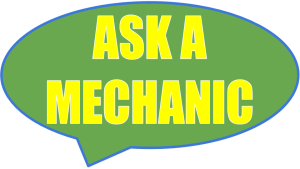Why does a Car need Servicing?
The primary objective of a car service is to ensure your vehicle is safe and reliable until its next service interval. A basic service will include an engine oil & oil filter change, a brake inspection and safety check. Additional service items are included at set intervals, the intervals are determined by vehicle use, time or distance traveled.
Car Servicing Components Include;
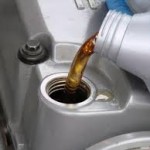 Engine oil and filter change: In engines, there is some exposure of the oil to products of internal combustion, this can lead to a build up of microscopic particles that accumulate in the oil during operation. Also the rubbing of metal engine parts produces some microscopic metallic particles from the wearing of the surfaces. The oil filter removes many of the particles and sludge, but eventually the oil filter can become clogged. An engine oil and oil filter change is recommended every 6 months or 10,000 km. Your engine oil can never be too clean. click here for the full article
Engine oil and filter change: In engines, there is some exposure of the oil to products of internal combustion, this can lead to a build up of microscopic particles that accumulate in the oil during operation. Also the rubbing of metal engine parts produces some microscopic metallic particles from the wearing of the surfaces. The oil filter removes many of the particles and sludge, but eventually the oil filter can become clogged. An engine oil and oil filter change is recommended every 6 months or 10,000 km. Your engine oil can never be too clean. click here for the full article
 Brake fluid change: Many manufacturers require periodic brake fluid changes of every 24 months to ensure reliability and safety. Moisture diffuses into the brake fluid through brake hoses and rubber seals over time, eventually the water content becomes so high the boiling point of the fluid is reduced. A low boiling point will affect braking performance. The corrosion inhibitors also degrade over time. Degraded inhibitors can cause corrosion in the braking system. click here for the full article
Brake fluid change: Many manufacturers require periodic brake fluid changes of every 24 months to ensure reliability and safety. Moisture diffuses into the brake fluid through brake hoses and rubber seals over time, eventually the water content becomes so high the boiling point of the fluid is reduced. A low boiling point will affect braking performance. The corrosion inhibitors also degrade over time. Degraded inhibitors can cause corrosion in the braking system. click here for the full article
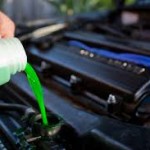 Coolant Change: Most automotive engines are water cooled to remove waste heat, although the water is actually an antifreeze/water mixture and not plain water. The term engine coolant is widely used in the automotive industry, which covers its primary function of convective heat transfer for internal combustion engines. When used in an automotive context, corrosion inhibitors are added to help protect vehicles’ radiators. Automotive manufacturers recommend periodic complete replacement of engine coolant, to simultaneously renew corrosion inhibitors and remove accumulated contaminants. I recommend replacement every 24 months. click here for the full article
Coolant Change: Most automotive engines are water cooled to remove waste heat, although the water is actually an antifreeze/water mixture and not plain water. The term engine coolant is widely used in the automotive industry, which covers its primary function of convective heat transfer for internal combustion engines. When used in an automotive context, corrosion inhibitors are added to help protect vehicles’ radiators. Automotive manufacturers recommend periodic complete replacement of engine coolant, to simultaneously renew corrosion inhibitors and remove accumulated contaminants. I recommend replacement every 24 months. click here for the full article
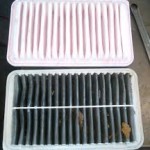 Engine Air Filter: The combustion air filter prevents abrasive particulate matter from entering the engine’s cylinders, where it would cause mechanical wear and oil contamination. Most fuel injected vehicles use a pleated paper filter element in the form of a flat panel. This filter is usually placed inside a plastic box connected to the throttle body with duct work. I recommend inspection of the air filter every 6 months, replacement every 24 months. click here for the full article
Engine Air Filter: The combustion air filter prevents abrasive particulate matter from entering the engine’s cylinders, where it would cause mechanical wear and oil contamination. Most fuel injected vehicles use a pleated paper filter element in the form of a flat panel. This filter is usually placed inside a plastic box connected to the throttle body with duct work. I recommend inspection of the air filter every 6 months, replacement every 24 months. click here for the full article
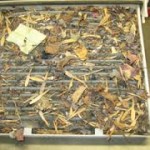 Cabin Filter: The cabin air filter is typically a pleated-paper filter that is placed in the outside-air intake for the vehicle’s passenger compartment. Being a relatively recent addition to automobile equipment, this filter is often overlooked, and can greatly reduce the effectiveness of the vehicle’s air conditioning and heating performance. Clogged or dirty cabin air filters can significantly reduce airflow from the cabin vents, as well as introduce allergens into the cabin air stream. Replacement is recommended every 12 months. click here for the full article
Cabin Filter: The cabin air filter is typically a pleated-paper filter that is placed in the outside-air intake for the vehicle’s passenger compartment. Being a relatively recent addition to automobile equipment, this filter is often overlooked, and can greatly reduce the effectiveness of the vehicle’s air conditioning and heating performance. Clogged or dirty cabin air filters can significantly reduce airflow from the cabin vents, as well as introduce allergens into the cabin air stream. Replacement is recommended every 12 months. click here for the full article
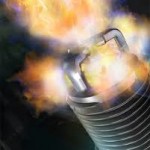 Spark Plugs: A spark plug is a device for delivering electric current from an ignition system to the combustion chamber of a spark-ignition engine to ignite the compressed fuel/air mixture by an electric spark. Over the years variations on the basic spark plug design have attempted to provide either better ignition, longer life, or both. By using metals such as yttrium, iridium, tungsten, or palladium the service life of a spark plug has been dramatically increased. Replacement recommendations can vary from 24 months to 120 months. click here for the full article
Spark Plugs: A spark plug is a device for delivering electric current from an ignition system to the combustion chamber of a spark-ignition engine to ignite the compressed fuel/air mixture by an electric spark. Over the years variations on the basic spark plug design have attempted to provide either better ignition, longer life, or both. By using metals such as yttrium, iridium, tungsten, or palladium the service life of a spark plug has been dramatically increased. Replacement recommendations can vary from 24 months to 120 months. click here for the full article
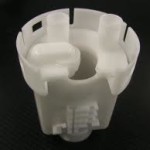 Fuel Filter: A fuel filter is a filter within the fuel supply line that screens out dirt and rust particles from the fuel, normally made into cartridges containing filter paper. Modern design has combined the fuel filter with the fuel pump, this is normally located within the fuel tank. ‘In-tank’ fuel filters require replacement every 48 months. ‘In-line’ filters are located between the fuel pump and engine. ‘In-line’ filters require replacement every 24 months. click here for the full article
Fuel Filter: A fuel filter is a filter within the fuel supply line that screens out dirt and rust particles from the fuel, normally made into cartridges containing filter paper. Modern design has combined the fuel filter with the fuel pump, this is normally located within the fuel tank. ‘In-tank’ fuel filters require replacement every 48 months. ‘In-line’ filters are located between the fuel pump and engine. ‘In-line’ filters require replacement every 24 months. click here for the full article
